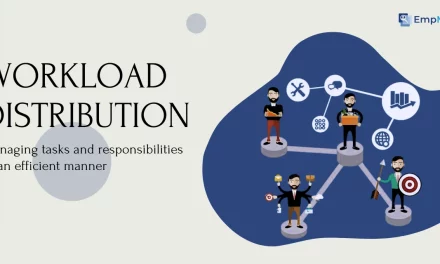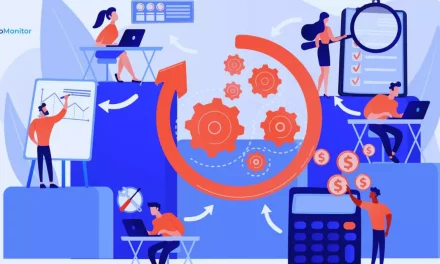If some of your team members always seem busy while others are bored, there might be a problem with how tasks are handed out. Have you ever felt like some employees are doing all the work while others do very little? That’s what uneven workload distribution feels like. As a manager, it’s your responsibility to ensure tasks are distributed fairly to prevent this.
Sometimes, managers give more work to the most productive team members. While this might get things done, it can make those workers feel overworked and unhappy. They might even quit. As a project manager, making sure everyone has a fair share of work is important.
In this blog, we’ll talk about what is a workload, how to manage workloads, and how to ensure tasks are spread out evenly among your team.
LISTEN TO THE PODCAST NOW!
Is Workload Distribution Balanced Within Your Team?
Being aware of this issue is crucial in preventing it. An imbalanced workload distribution occurs when some team members are overloaded while others have lighter workloads.
This imbalance can manifest in various ways:
- Some team members work longer hours while others contribute less.
- Certain individuals spend more time on tasks that don’t match their skill sets.
- Fluctuations in workload- lead to periods of overload followed by underutilization.
Is an Unbalanced Workload Similar to a Heavy Workload?
An unbalanced workload is not synonymous with a heavy workload, although they can both exist within a team simultaneously. A heavy workload refers to the team collectively having more tasks to complete than its capacity allows, regardless of how to distribute work equally. In this situation, even with a balanced workload distribution, each individual may still be overworked due to the sheer volume of tasks.
On the other hand, an unbalanced workload distribution specifically pertains to some team members bearing a disproportionate amount of the workload while- others have lighter workloads- despite the team as a whole having the capacity to handle the project.
How Is Workload Measured?
Measuring workload can be quite intricate due to the varying nature of tasks and employees’ abilities. Each task carries its own time and mental demands, which can differ significantly based on the skill set of the individual performing it.
Seeing the complexity of the workload distribution process, even NASA has delved into this and developed the Task Load Index (TLX) method, regarded as one of the most thorough approaches to workload assessment.
TLX relies on subjective assessments from individuals involved in the tasks to provide a holistic view of the workload. By combining these assessments, TLX generates a workload value that allows for comparisons between different tasks, helping to identify which tasks are more demanding than others.
While TLX offers a sophisticated framework for workload measurement, simpler methods can also be effective. One crucial aspect to consider is time estimation, which involves predicting how long each task should take to complete. However, it’s essential to recognize that time estimates may vary depending on the skill level of the employee performing the task.
In addition to time estimation, it’s crucial to consider the skills required for each task. Assigning tasks to employees based on their skill sets ensures that they can perform their work efficiently and effectively. Effective workload distribution involves aligning tasks with employees who possess the necessary skills, thereby optimizing productivity and minimizing stress.
By taking into account both time and skills when evaluating workload, organizations can better manage their resources and ensure that tasks are completed on time by competent individuals. This approach promotes a workload balanced, enhances employee satisfaction, and ultimately contributes to overall organizational success.
What Are The Risk Of Distributing Work Unevenly In A Team?
The risks of distributing work unevenly in a team include:
- Resentment and conflicts: Uneven workload distribution often leads to resentment among team members, particularly when tasks don’t require specialized skills. Overworked employees may become frustrated, affecting their focus and resulting in delays or incomplete deliverables. It can escalate into conflicts within the team and ultimately lead to job dissatisfaction.
- Increased turnover: Employees, even high performers, may seek opportunities elsewhere if they feel their workload is unfairly distributed and management isn’t addressing- the issue. The trend of the “Great Resignation” highlights the importance of work-life balance and fair workload distribution in retaining talent. Factors like recognition, job control, and engagement also influence turnover rates.
- Lack of meaningful progress: Overloaded team members may -resort to multitasking to cope with their workload. However, multitasking often leads to decreased productivity, increased stress, and lower-quality work. Instead of making meaningful progress on tasks, team members may struggle to juggle multiple responsibilities simultaneously, hindering overall project success.
How Do You Distribute Workload Equally?
Balancing workload among team members is essential for maintaining productivity and morale. Here are some tips for effective workload distribution and to ensure the workload- is distributed fairly:
Plan and prioritize work in advance:
Begin by thoroughly outlining the tasks and objectives of your projects. Categorize the tasks based on their nature, urgency, and complexity. Assess the workload associated with each task and allocate resources accordingly. By setting realistic deadlines and milestones, you ensure that the workload is evenly distributed across the team members. Prioritizing tasks equally among teams allows for a balanced workload management approach, especially when dealing with multiple projects simultaneously. This proactive planning ensures that no task is overlooked, or underestimated, leading to a smoother workflow and timely project completion.
Evaluate your team’s capacity:
Understanding the skills and capabilities of your team members is crucial for effective workload distribution. Conduct a comprehensive assessment of their expertise, experience, and availability. Identify any skill gaps or disparities in workload distribution that may hinder productivity or cause bottlenecks. By recognizing the strengths and limitations of each team member, you can allocate tasks more strategically, ensuring a fair distribution of workload and maximizing efficiency. Additionally, regularly review and adjust workload assignments based on changes in project requirements or team dynamics to maintain a balanced workload distribution.
Utilize workload management tools:
Leverage technological solutions to streamline the workload distribution process and optimize resource allocation. Therefore, you should invest in project management software or specialized workload management tools like EmpMonitor that provide real-time visibility into team workload, availability, and task assignments.
These tools facilitate efficient monitoring of employee activities and ensure the productive utilization of resources, contributing to a more streamlined and productive work environment.
EmpMonitor: Workforce Management Software
EmpMonitor is a workforce management software designed to streamline various aspects of managing a workforce within an organization. It provides solutions to enhance efficiency, productivity, and compliance across different departments.
Here are the key features of EmpMonitor:-
- Real-Time Activity Tracking: Monitor and track your activities in real-time, providing an up-to-the-minute overview of your work.
- Productivity Analytics: Access detailed analytics and reports on your productivity, helping you identify patterns, peak performance periods, and areas for improvement.
- Detailed Insights: Receive comprehensive insights into your workflow, allowing for informed decisions on task prioritization and schedule optimization.
- Screen Recording: Capture and review screen activity to gain deeper insights into employee workflow and identify areas for optimization or training.
EmpMonitor provides managers with the tools and insights they need to effectively distribute workloads among employees, ensuring optimal productivity and efficiency within the organization.
Clarify roles and responsibilities:
Clear communication and defined roles are essential for fostering collaboration and preventing task duplication or confusion. Establish transparent guidelines for task ownership, delegation, and collaboration within the team. Clearly outline each team member’s roles, responsibilities, and areas of expertise to avoid overlaps or gaps in workload distribution. Encourage open dialogue and regular check-ins to ensure that everyone- understands their roles and contributions to the project. By promoting a culture of clarity and accountability, you empower team members to work more efficiently and collaboratively, leading to a more equitable distribution of workload.
Set high expectations:
Cultivate a culture of excellence and accountability by setting high standards for performance and productivity. Communicate project goals, objectives, and performance expectations to all team members. Encourage a proactive approach to workload management and task prioritization, emphasizing the importance of meeting deadlines and delivering quality work.
Provide constructive feedback and recognition for achievements to motivate team members and reinforce a sense of ownership and pride in their work. By fostering a culture of continuous improvement and excellence and actively sharing the workload in a team, you inspire your team to strive for success and contribute their best efforts to achieve shared goals.
By implementing these strategies, you can create a more equitable and efficient workload distribution system that maximizes productivity, minimizes stress, and promotes overall team success.
Also Read,
5 Important Tips For Effective Workload Distribution
How To Navigate Workload Balance In The Modern Workplace?
Wrapping Up
Effective workload distribution is crucial for determining a team’s productivity and success. It relies on a comprehensive understanding of each team member’s individual strengths, weaknesses, and workload capacity. By leveraging this understanding, task allocation can be optimized for maximum efficiency. EmpMonitor emerges as a valuable asset in this endeavor, offering invaluable insights into the performance and availability of each team member.
However, successful workload distribution goes beyond mere task assignment. Communication serves as the cornerstone of this process. Ensuring that every team member is well-informed about their responsibilities and deadlines fosters clarity and accountability. Regular check-ins are essential to gauge progress and address any necessary adjustments promptly. With clear communication channels and adaptable workflows facilitated by tools such as EmpMonitor, teams can operate smoothly and achieve their objectives with greater efficacy.
FAQs
Q. What is workload distribution?
Workload distribution involves assigning tasks among team members efficiently to ensure productivity and prevent burnout.
Q. How do I assess team workload?
Assess team workload by understanding individual capacities, using project management tools, and maintaining open communication.
Q. What factors should I consider when distributing workload?
Consider factors like skills, availability, deadlines, task complexity, and growth opportunities for fair distribution.
Q. How can I measure the effectiveness of workload distribution?
Measure effectiveness through productivity, task completion rates, feedback, and performance metrics, adjusting strategies accordingly.












